
Located atop the Montagne Sainte-Genevieve, a hill overlooking the left bank of the Seine, the majestic edifice of the Panthéon was commissioned by King Louis XV and was built between 1758 and 1790, from designs by Jacques-Germain Soufflot. It is said that when the King was suffering from a continuous fever and illness in 1744, he vowed to erect a church dedicated to Saint Genevieve, the patroness of Paris, insisted by his mistress, Madame de Pompadour.
Ultimately, he kept his promise, when the foundation was laid in August 1758. However, the work proceeded slowly due to financial contingency and neither Soufflot nor Louis XV lived long enough to attend the grand opening of the church and the French Revolution began when it was nearly complete, with only the interior decoration unfinished. Within a short while, the National Constituent Assembly voted unanimously in 1791 to transform the Church of Saint Genevieve into a mausoleum for the remains of distinguished French citizens, modelled on the Pantheon in Rome. Accordingly, Count of Mirabeau, a leader of the early stages of the French Revolution, became its first brief resident followed by Voltaire, Rousseau and several executed revolutionaries, only to be removed from the building on 26 February 1795 by the Muscadines, the street fighters of the Thermidorian Reaction in Paris in the French Revolution, which resulted in the fall of Robespierre.
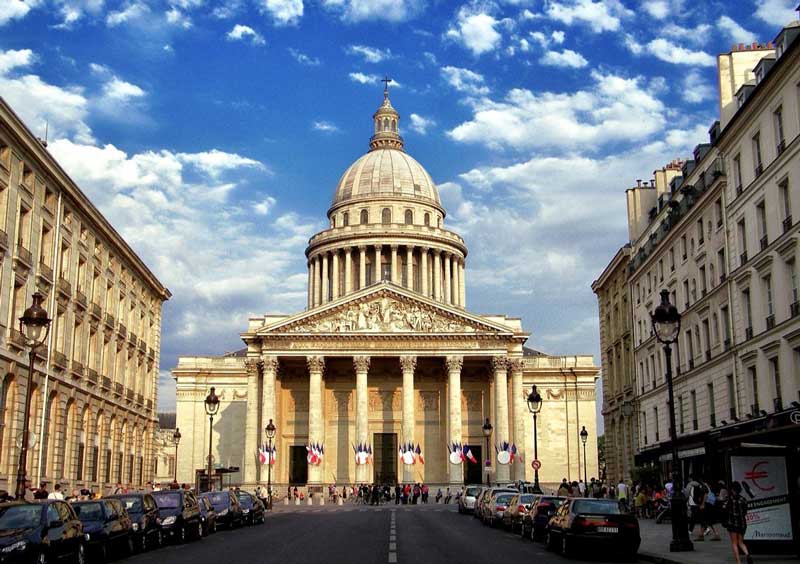
Nevertheless, when Napoleon Bonaparte became First Consul in 1801, he signed a Concordat with the Pope and gave the building back to the Catholic Church, although the crypt of the church continued to serve its official function as the resting place for illustrious Frenchmen. During his reign, a new entrance directly to the crypt was created via the eastern porch and the remains of forty-one illustrious Frenchmen, mostly military officers, senators and other high officials of the Empire, were placed in the crypt. After the fall of Napoleon, Louis XVIII of France restored the entire Panthéon, including the crypt in 1816 and the church was finally consecrated officially in the presence of the King, which had been omitted during the Revolution.

The 360 feet (110 m) long, 275 feet (84 m) wide and 272 feet (83 m) tall building of the Panthéon, with the crypt beneath of the same size, is a cruciform building with its ceiling supported by isolated columns.
The columns, in their turn, supported an array of barrel vaults and transverse arches, along with a high, massive dome over the crossing, supported by pendentives and rested upon four massive pillars and the lower saucer-shaped domes, covered by a sloping roof. The huge dome, completed in 1790 and constructed entirely of stone, is comprised of three domes, one within the other, with the painted ceiling, visible from below, on the second dome. Although initially it was decided to put a statue of Saint Genevieve at the top of the dome, a cross was put temporarily in 1790. But when the structure was transformation into a mausoleum in 1791, it was planned to replace the cross by a statue representing Fame. Somehow, the project was however abandoned and between 1830 and 1851, a flag was put instead. Although the cross returned after Louis-Napoleon Bonaparte restored the building to church use, a red flag took its placeduring the Paris Commune in 1871. However, the cross returned subsequently.
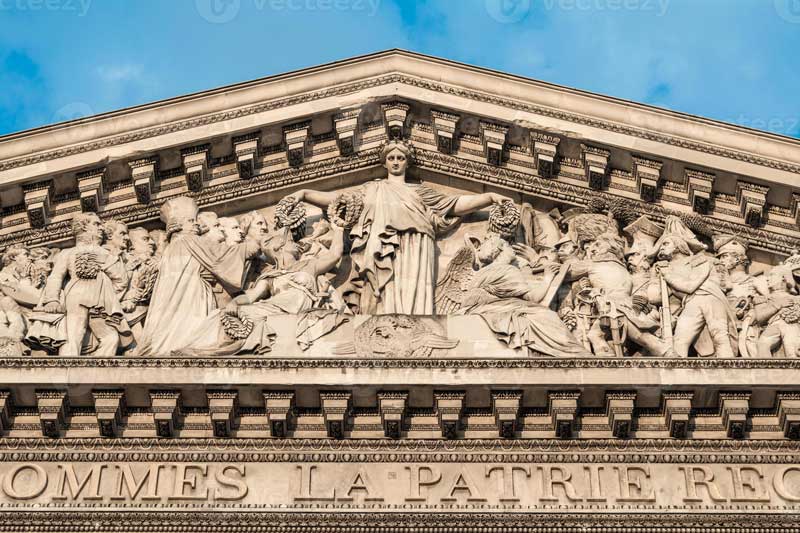
The façade of the building, like its Roman counterpart, is formed by a porch of Corinthian columns and triangular pediment attached to the ends of the eastern arm. Replacing an early pediment with religious themes, the sculpture on this pediment, added in 1791, was created by Pierre-Jean David d’Angers and dedicated to the great men, from a grateful nation. It depicts the Nation distributing crowns handed to her by Liberty to great men, civil and military, while history inscribes their names. While the figures in he left represents the distinguished scientists, philosophers, and statesmen, including Rousseau, Rousseau, Voltaire, Lafayette and Bichat, Napoleon is in the right, Voltaire, Lafayette, and Bichat.
To the right is Napoleon Bonaparte, along with soldiers from each military service and students in uniform from the École Polytechnique, a reputed French public institution of higher education and research.
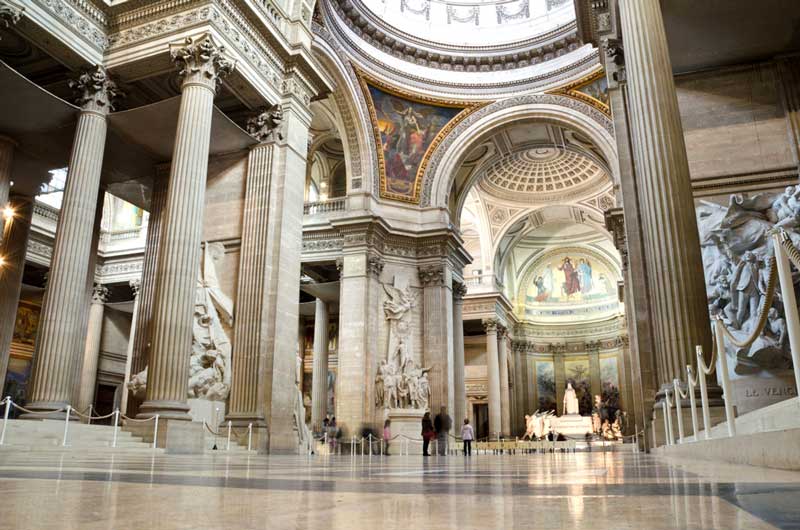
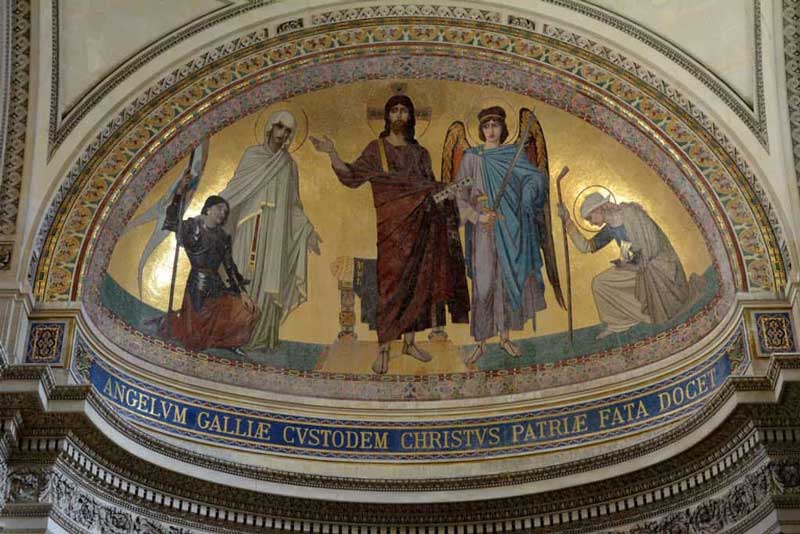
The inner decorations of the Pantheon, which includes the bas-reliefs, sculptures, and artistic paintings, all reflect the bitter political debates of every period it had to face, Christian, patriotic, republican, masonic, and philosophic. The primary decoration of the Western Nave is a series of paintings, beginning in the Narthex, consisting of the entrance and lobby area, located at the west end of the nave, depicting the lives of Saint Denis, the patron saint of Paris and longer series on the life of Saint Genevieve. The paintings of the Southern nave and Northern Nave also display the series on the Christian heroes of France, depicting the important scenes from the lives of Charlemagne, Clovis, Louis IX of France and Joan of Arc. It is interesting to note that from 1906 to 1922, the Panthéon was the site of the famous sculpture The Thinker, created by Auguste Rodin.

The crypt of the Panthéon is severely restricted by a parliamentary act and only allowed for the National Heroes. The necropolis contains the remains of only the great French citizens, which include Voltaire, Jean-Jacques Rousseau, Victor Hugo, Èmile Zola, Soufflot, the architect of Panthéon, French chemist and politician Marcellin Berthelot and his wife Mme Sophie Berthelot, Heroines of French resistance Geneviève de Gaulle-Anthonioz, Germaine Tillion, Simone Adolphine Weil and her husband, Nobel laureate Marie Curie and others.
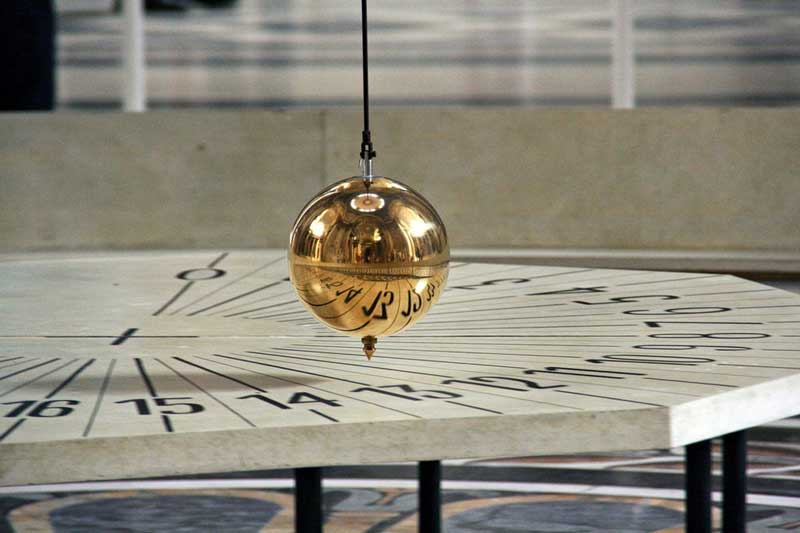
In 1851, scientist Léon Foucault hooked a cable to the centre of the dome, creating a huge 220 feet (67 m) pendulum that he used to demonstrate the rotation of the Earth. While the original pendulum was housed in the Musée des Arts et Métiers, since1995, a replica of the Foucault’s Pendulum has been in place under the massive dome of Panthéon, as a token of the historical event that took place there.